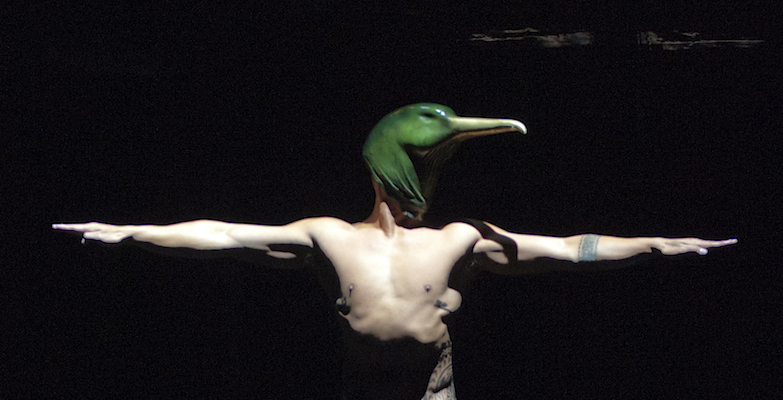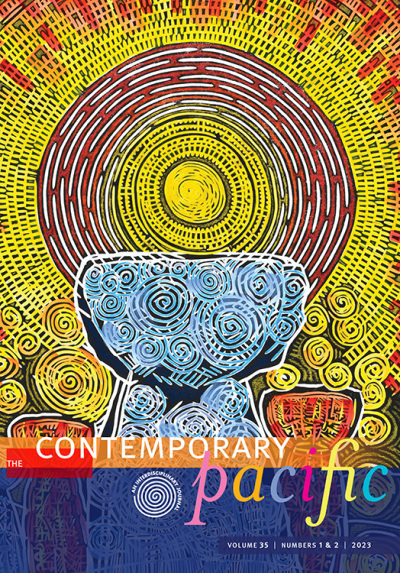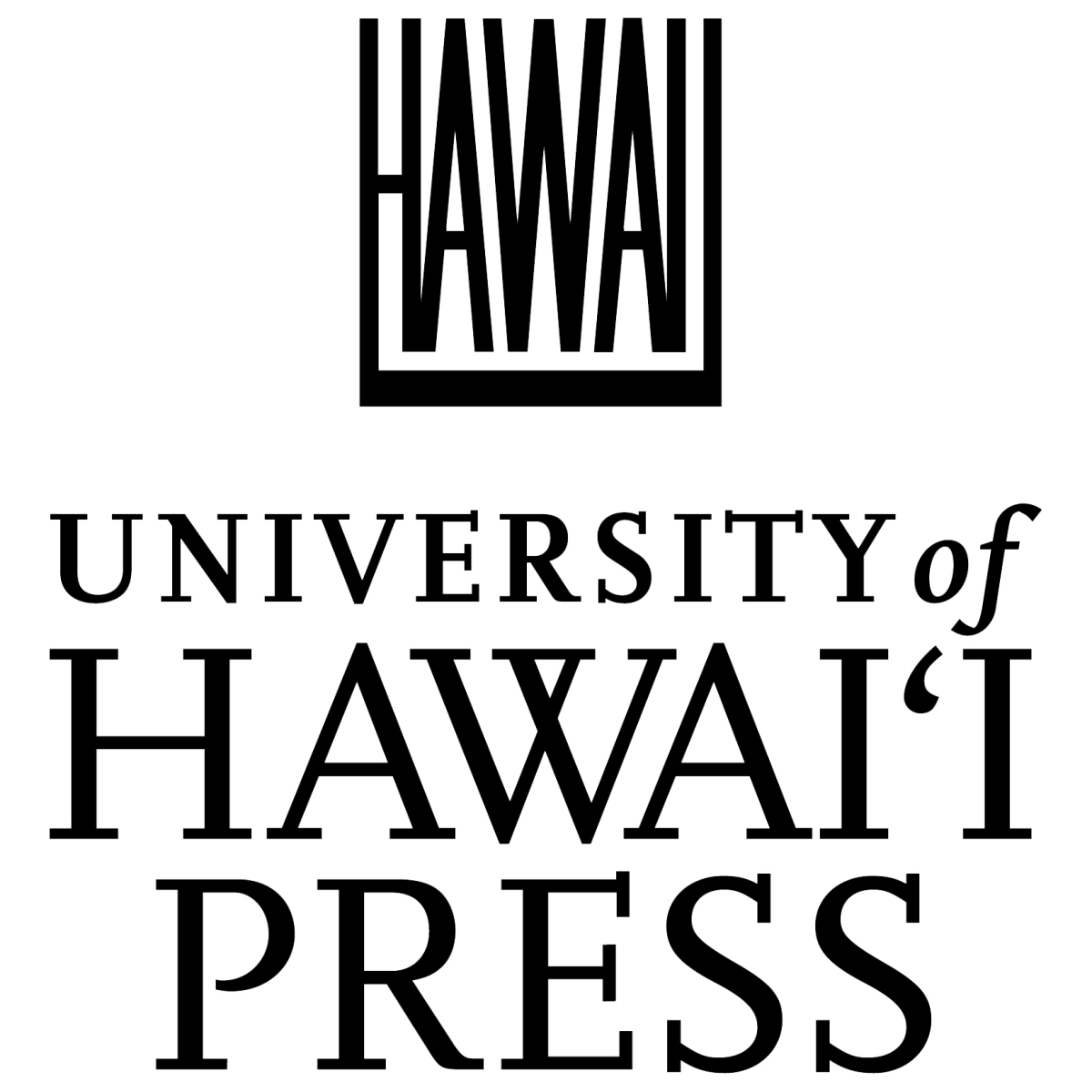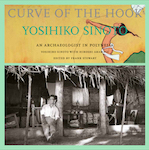2016
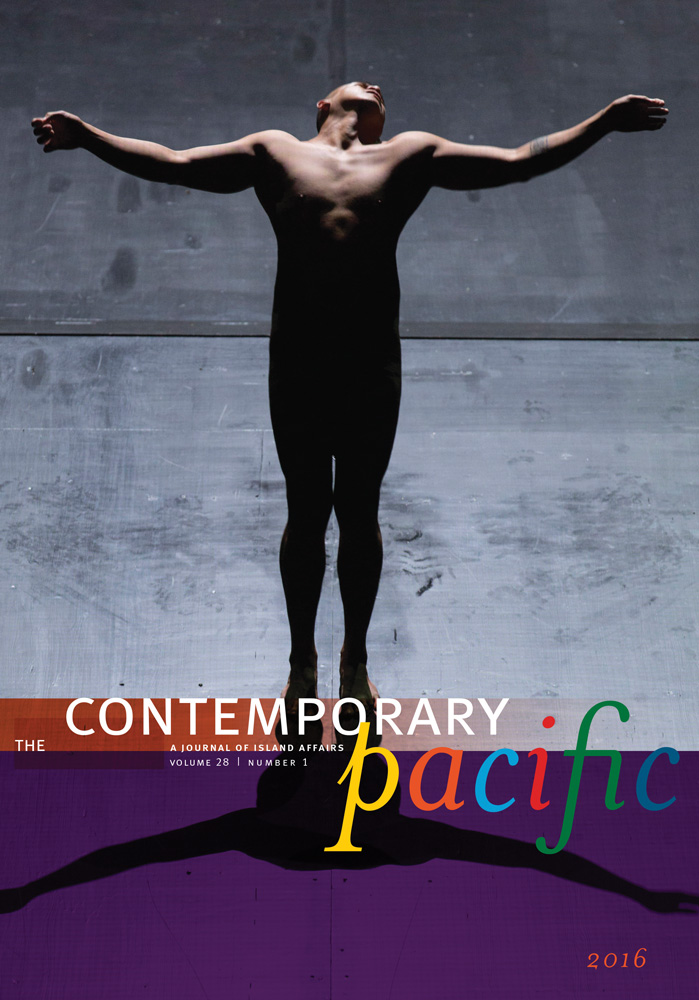 |
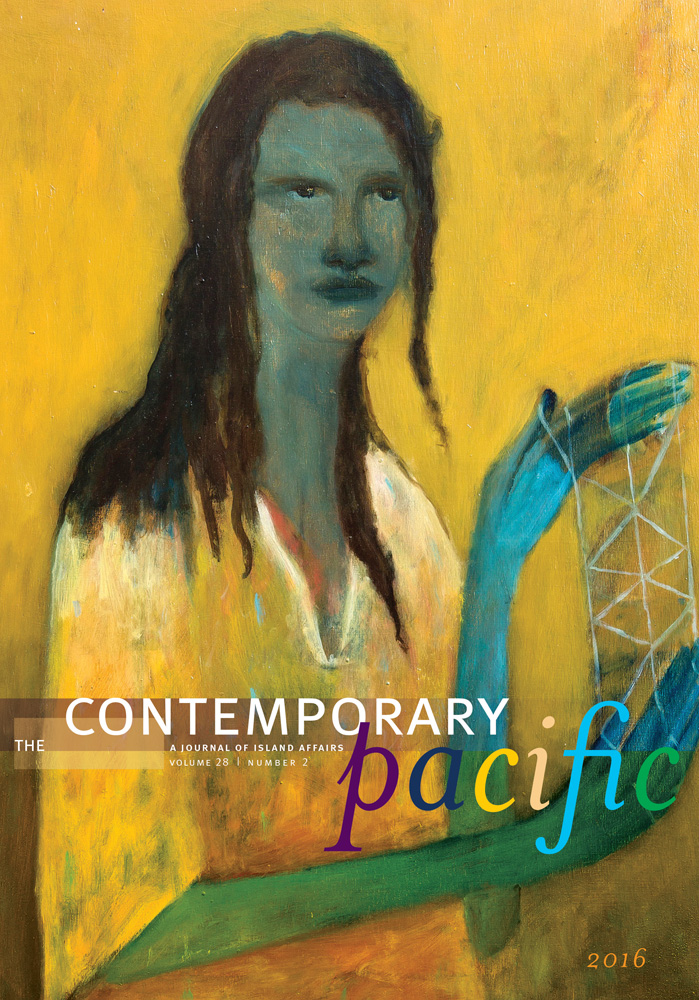 |
|
Spring 28(1) Articles Local Norms and Truth Telling: Examining Experienced Incompatibilities within Truth Commissions of Solomon Islands and Timor-Leste Multidimensional, Gender-Sensitive Poverty Measurement: Perspectives from Fiji Musical Melanesianism: Imagining and Expressing Regional Identity and Solidarity in Popular Song and Video Cartooning History: Lai’s Fiji and the Misadventures of a Scrawny Black Cat Dialogue Berths and Anchorages: Pacific Cultural Studies from Oceania Rethinking Pacific Studies Twenty Years On Political Reviews Micronesia in Review: Issues and Events, 1 July 2014 to 30 June 2015 Polynesia in Review: Issues and Events, 1 July 2014 to 30 June 2015 Book and Media Reviews Making Micronesia: A Political Biography of Tosiwo Nakayama, by David Hanlon The Kanak Awakening: The Rise of Nationalism in New Caledonia, by David Chappell France in the South Pacific: Power and Politics, by Denise Fisher Mining Capitalism: The Relationship between Corporations and Their Critics, by Stuart Kirsch Gender on the Edge: Transgender, Gay, and Other Pacific Islanders, edited by Niko Besnier and Kalissa Alexeyeff Buveurs de Kava, by Patricia Siméoni and Vincent Lebot Native Nations: The Survival of Fourth World Peoples, edited by Sharlotte Neely Language Contact in the Early Colonial Pacific: Maritime Polynesian Pidgin before Pidgin English, by Emanuel J Drechsel Plastic Paradise: The Great Pacific Garbage Patch [documentary] Nuclear Savage: The Islands of Secret Project 4.1 [documentary] Melanesia: Art and Encounter, edited by Lissant Bolton, Nicholas Thomas, Elizabeth Bonshek, Julie Adams, and Ben Burt Featured Artist: Lemi Ponifasio
Lemi Ponifasio is a theater director, New Zealand Arts Laureate, tufuga, and Samoan high chief; he has been described as a profound visionary whose work transcends genres to redefine the power of art. In 1995 he founded MAU, a dance theater and creative forum for collaborative engagement among artists, scholars, community leaders, and activists. MAU now regularly performs in the most prestigious international arts festivals. |
Fall 28(2) Articles Moving Objects: Reflections on Oceanic Collections The I and the We: Individuality, Collectivity, and Samoan Artistic Responses to Cultural Change Retelling Chambri Lives: Ontological Bricolage Dialogue Outcomes of State Territoriality and Minin Development for the Kanak in New Caledonia Resources Pacific Literature Searches in the Internet Age Political Reviews The Region in Review: International Issues and Events, 2015 Melanesia in Review: Issues and Events, 2015 Book and Media Reviews Consuming Ocean Island: Stories of People and Phosphate from Banaba, by Katerina Martina Teaiwa The Pacific Festivals of Aotearoa New Zealand: Negotiating Place and Identity in a New Homeland, by Jared Mackley-Crump The Things We Value: Culture and History in Solomon Islands, edited by Ben Burt and Lissant Bolton The Black Pacific: Anti-Colonial Struggles and Oceanic Connections, by Robbie Shilliam Voices of Fire: Reweaving the Literary Lei of Pele and Hiʻiaka, by kuʻualoha hoʻomanawanui A Chosen People, A Promised Land: Mormonism and Race in Hawaiʻi, by Hokulani K Aikau Repositioning Pacific Arts: Artists, Objects, Histories, edited by Anne E Allen, with Deborah B Waite Don’t Spoil My Beautiful Face: Media, Mayhem and Human Rights in the Pacific, by David Robie Idyllic No More: Pacific Island Climate, Corruption and Development Dilemmas, by Giff Johnson The Polynesian Iconoclasm: Religious Revolution and the Seasonality of Power, by Jeffrey Sissons Te Vaka [performance] The Empires’ Edge: Militarization, Resistance, and Transcending Hegemony in the Pacific, by Sasha Davis Huihui: Navigating Art and Literature in the Pacific, edited by Jeffrey Carroll, Brandy Nālani McDougall, and Georganne Nordstrom In Football We Trust [documentary film] Featured Artist: Star Gossage
Star Gossage is one of New Zealand’s foremost living painters and has Ngati Wai, Ngati Ruanui, French, English, and Portuguese ancestry. She lives in Pakiri, a coastal settlement north of Auckland, and makes paintings that the former Curator Māori from Auckland Art Gallery, Ngahiraka Mason, describes as gentle and powerfully evocative of spiritual connections and tribal narratives. They “affirm her whakapapa, relationships to land, sky and ocean” and “experiences shared by her people and the mystical worlds they have inhabited.” Works such as Rahui Kiri Rd, for example, acknowledge her chiefly Ngati Wai lineage as great-great-granddaughter of Rahui Kiri, daughter of Ngati Wai chief Te Kiri. |

